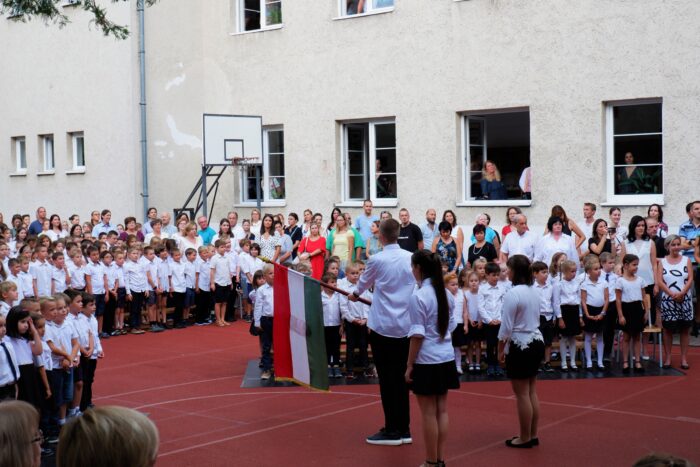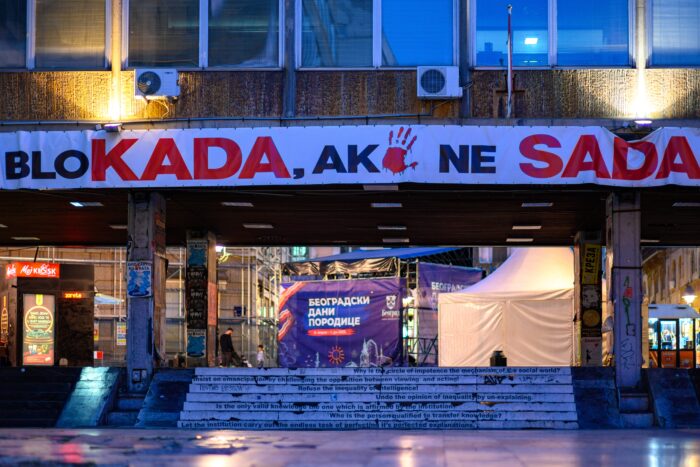The Progressive Post
Sweden: a ‘normalised’ far-right and the challenges ahead
Many more people voted for the Swedish Social Democratic Party in the recent election in Sweden than in 2018. However, the governing coalition led by the Social Democrats lost its majority in parliament. What conclusions can be made about the Social Democratic campaign strategy, and what political project lies ahead in a new political landscape, where the radical right is the biggest winner in the election?
Election results often send mixed messages. The last time Sweden went to the polling stations, in 2018, the outcome for the Swedish Social Democrats (SAP) looked bleak. Repeated polls had us several percentage points below the previous election result. There was a widespread fear among party activists that we would fall below 25 per cent, which to many seemed like a ‘dangerous threshold’ and would be a disaster for a party that used to collect around 40 per cent of the popular vote for large parts of the 20th century.
It turned out that the polls had been wrong. In the 2018 election, SAP reached 28.3 per cent. Although its lowest result since democracy was adopted in Sweden, there was a great sense of relief: we beat the expectations, and managed to once again form a government, with the Green party.
This time is different. On 11 September 2022, Sweden went to the polls again. The outcome left 176 parliamentary seats to the right-wing bloc, and 173 to the centre-left parties including SAP, which means SAP in all probability has to leave office. In this respect, the result is a loss. On the other hand, SAP did very well. After eight years in government, we managed to improve the last result (up from 28.3 per cent to 30.3 per cent). This is the first time in 20 years that SAP managed to grow in an election. There will probably be a lot more SAP-based majorities in municipal and regional parliaments – as municipal and regional elections were held at the same time
Mixed messages – indeed.
The biggest winner in the election is without a doubt the radical far-right party Sweden Democrats (SD). Formed by old Nazi supporters in the 1980s, for a long time a fringe party without formal political representation, it entered parliament in 2010 and has grown considerably in each election since. This election gave them above 20 per cent, which means that they are the second largest party in parliament and, perhaps even more important, larger than the Moderates, the conservative party which traditionally comes in second after SAP. With SD being the most disliked party of all among the electorate and without previous experience in governing, it seems unlikely SD party leader Jimmie Åkesson could gather enough support in the obligatory parliamentary vote to become prime minister. The party will, however, have a considerable influence over a right-wing government, which will not be able to form a majority in parliament without SD. This means a dramatic change in the political landscape in Sweden, where right-wing populists for a long time had difficulties in gaining political momentum. Not so anymore.
The Sweden Democrats is a party focused on repatriation, lowering immigration and tougher measures on crime, especially in neighbourhoods where the share of immigrants is high. Several representatives of the party have expressed contempt for the freedom of the press and traditional institutions of rule of law. The rise of the Sweden Democrats is a great challenge to humanism, to the Swedish political system, but also strategically to SAP. Although only a small share of SD voters are former SAP voters, demographically SD’s electoral base is formed by groups who traditionally voted SAP. Working class or self-employed men vote for SD in large numbers – there is, by the way, a considerable and growing gap in male and female voting patterns, where women vote more to the left and men more to the right. SD is also the biggest party outside of larger cities.
During the election campaign, SAP met the SD challenge in two ways. Firstly, by addressing what has been on top of the electorate’s agenda for a long time – crime and punishment. Traditionally a calm and safe country, organised crime has grown in Sweden and deaths by violence, particularly shootings, have increased considerably in the past decade. Since the public usually trusts right-wing parties more when it comes to being tough on crime, SAP and its party leader Magdalena Andersson have put a lot of effort into forming a stricter policy on crime. This has been important, foremost in meeting the actual challenge that crime poses to society, but also strategically when it comes to persuading voters.
Secondly, SAP has made sure to stress the threat SD poses – to humanism, to equality and also to national security, since there have been numerous incidents where SD activists and politicians have taken sides with Putin, Orbán and the likes. The strategy of reminding the public of the party’s roots in racist and Nazi movements, in this election as well as in 2018, is in all probability the explanation for the growth of support for SAP among the demographic group we usually have not been strong with: well educated urban men and women.
Although the numbers remain to be analysed in detail, the electoral base of the SAP is changing. In the past elections, SAP has lost ground in areas where we usually have been strong – among the working class and outside of the largest cities – while gaining ground among white-collar workers in Stockholm, Gothenburg and other urban areas. This is in many ways an international trend, but it has come more lately to Sweden, where class voting has remained strong for a long time.
The challenges ahead are several. Firstly, with the growing fragmentation of the political landscape, it is increasingly difficult to govern in Sweden. The past eight years have seen numerous crises of government and compromises among the ruling parties that have been difficult for the electorate to anticipate, and also for some party members to swallow. Secondly, the coalition of classes that SAP traditionally has managed to form among its supporters is clearly more of a challenge today. A few decades ago, SAP was a larger party and had supporters among blue collar as well as white collar workers. Today, the growth in one group seems to scare others away. To name just one example: stressing the troubling ideological roots of SD works well with urban, well-educated people, but seems less convincing among traditional working-class voters.
If the right-wing parties form a government this fall, SD will be at the centre of the political stage in a way they have never been before. There is a risk that they will be increasingly more normalised in the eye of the public. The question is how many more elections the strategy of bringing up SD’s past will move voters. Regardless of the final outcome of the election and what government is formed, there is a need for a new political project for SAP, in a new political landscape in Sweden.
Photo credits: Shutterstock.com/Susie Hedberg




